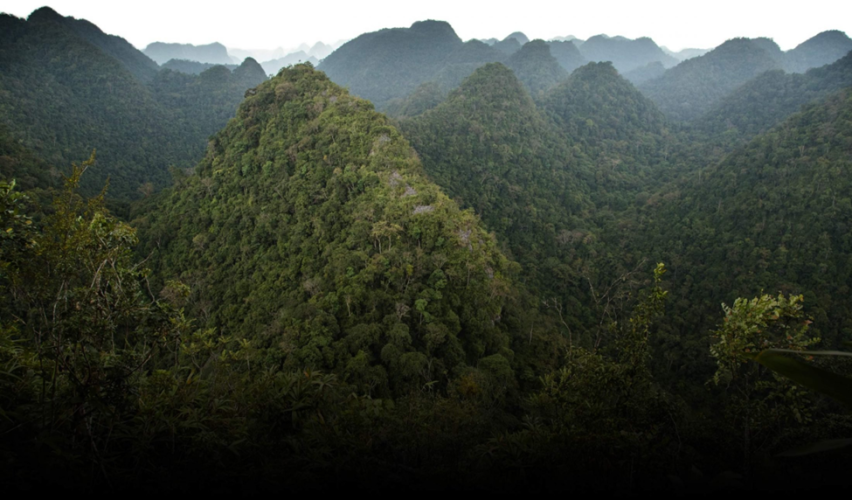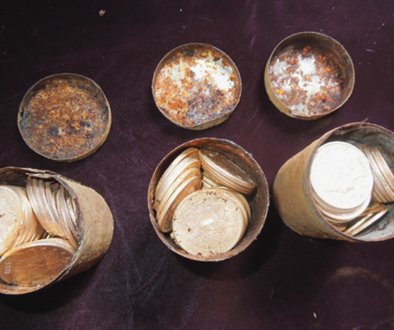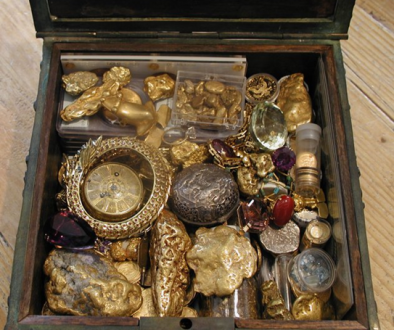Going on a Treasure Hunt
I hope you are well. As you remember, for about a year, I sent you an email every Friday called This Week in the Wild. It was an attempt to share my observations on wildlife conservation and the natural world. When I started a new job, I didn’t have time to write it anymore.
However, for the last several years, I have been the Chairman of the Board of an organization called the Saola Foundation for Annamite Mountains Conservation. Our goal is to find one of the most elusive creatures on earth. The team has been working very hard to prepare for the search and it is about to begin.
As an effort to help educate people about this epic search and to hopefully raise some funding to help pay for it, I have resurrected a version of This Week in the Wild. It is called Going on a Treasure Hunt. It will last for 4 weeks. It will educate and hopefully entertain you as you learn about how we plan to conduct one of the greatest searches in conservation history.
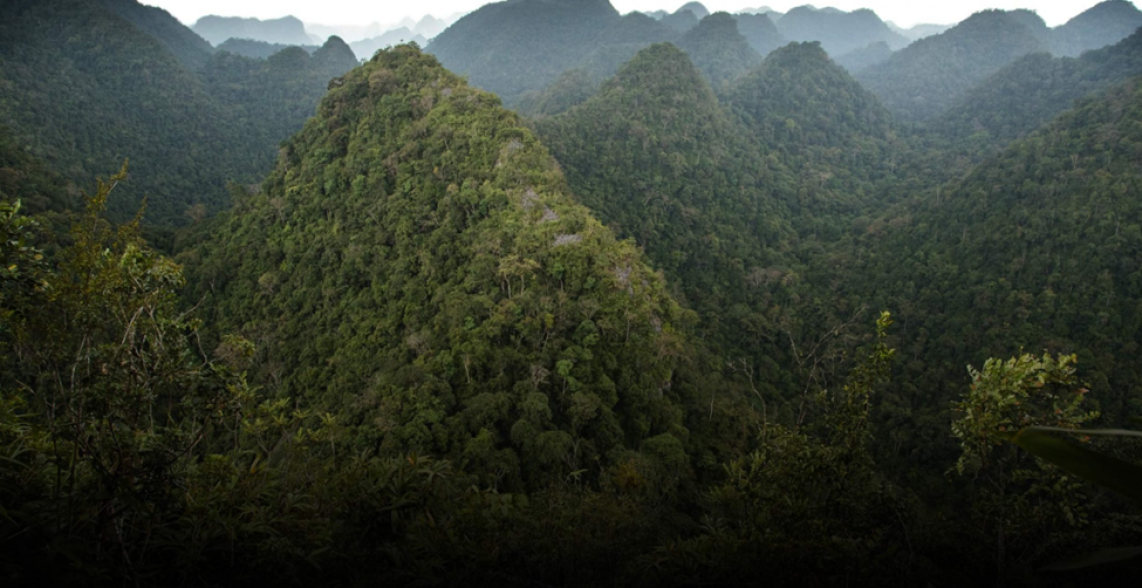
The thick forest of the Annamite Mountains © Flora & Fauna International
And now, Going on a Treasure Hunt—Week 1 of 4
In 1985, Bob Ballard found what is considered one of the greatest treasures of all time—the Titanic. It was sitting on the bottom of the North Atlantic, 12,600 feet down and 73 years after the unsinkable ship sank. The funny part is that Ballard wasn’t actually looking for the Titanic. He was searching for something else.
Bob Ballard studied the ocean floor, its mountain ranges, canyons, ridges and plateaus that stretch between the continents. For years, he helped map the ocean floor for the U.S. Navy, who were very interested in understanding what lay where in order to keep their submarines from smashing into something.
After he got out of the Navy, he wanted to continue his work, but he needed a boat, a really big boat with lots of very expensive equipment. The only funder with that much money was his old employer, the Navy. His new boat came with some strings attached.
In 1985, the Navy wanted to find two nuclear submarines, the Thresher and the Scorpion, which had sunk in the Atlantic in the 1960’s. They didn’t want the Soviets to know. So, they called in a favor and asked Ballard to go find it using his vast knowledge of the ocean floor. The Navy and Ballard knew that the Soviets would be tracking their movements, so they needed a ploy. In order to cover up his real search, Ballard told the world that he would launch one of the greatest treasure hunts of all time. His fabricated goal was to find the Titanic.
After several months of pretending to search for the Titanic, something went wrong. He actually found it, frozen in time at the bottom of the icy Atlantic. In the process of capturing pictures of the ship, Ballard captured something so much bigger—our imaginations.
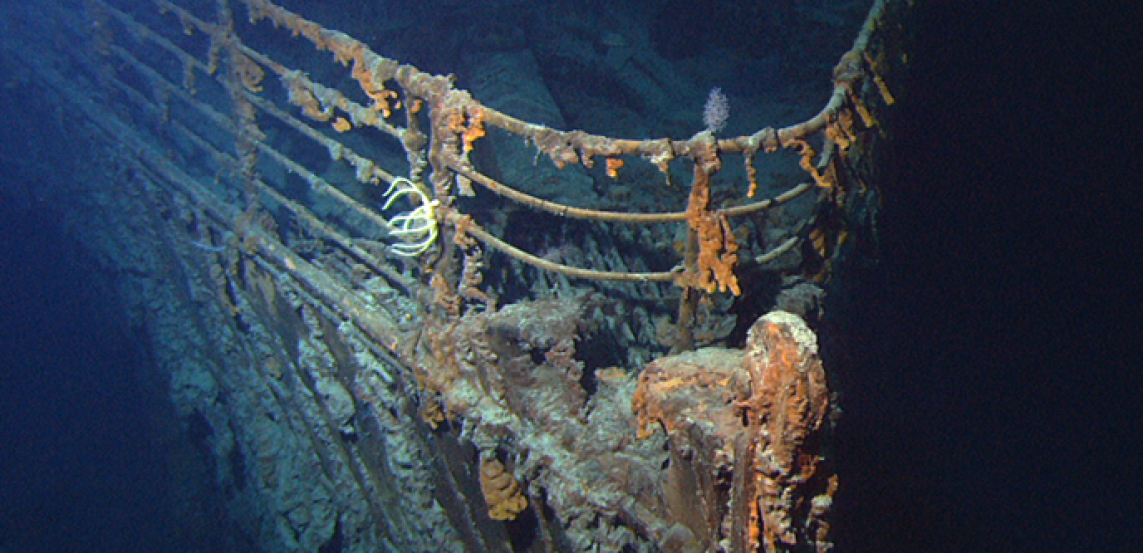
The Titanic on the bottom of the ocean © Wikipedia
Treasure hunting always does. The quest to find the Holy Grail has fascinated us for centuries. When archeologist Howard Carter opened King Tut’s tomb in 1922 it ended a search that had been nearly 800 years in the making.
People still search for John Dillinger’s stash of $200,000 he buried in either Wisconsin or Ohio depending on which rumor you believe. We keep looking for the money supposedly buried in Colorado by Butch Cassidy and his gang. Thousands of people tune it to the Discovery Channel to see if the effort to get to the bottom of a giant shaft on Oak Island in Nova Scotia eventually ends in treasure.
The idea of finding someone’s lost treasure and getting instantly rich has caused us to venture out on some of the greatest quests in our history. But what if getting “rich” involved a different kind of “rich?” What if a treasure hunt made us “biologically rich” by discovering one of the rarest treasures on the planet?
In 1992, a group of western and Vietnamese scientists were carrying out a biological survey in the Annamite Mountains of Vietnam, a range that forms the border between Vietnam and Laos. The chain was not well studied by western scientists because it was off limits for many years—among other things, the Ho Chi Minh Trail wound through part of the Annamites.
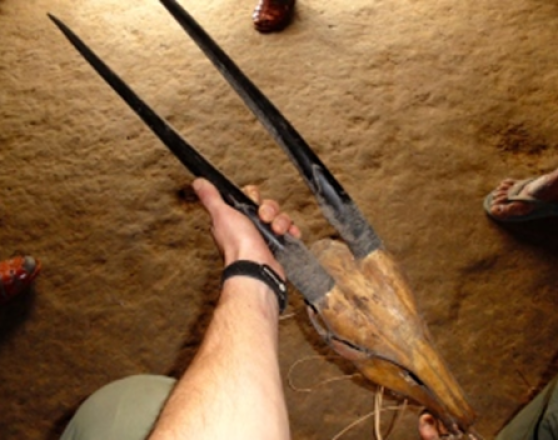
Saola Skull © Saolablog
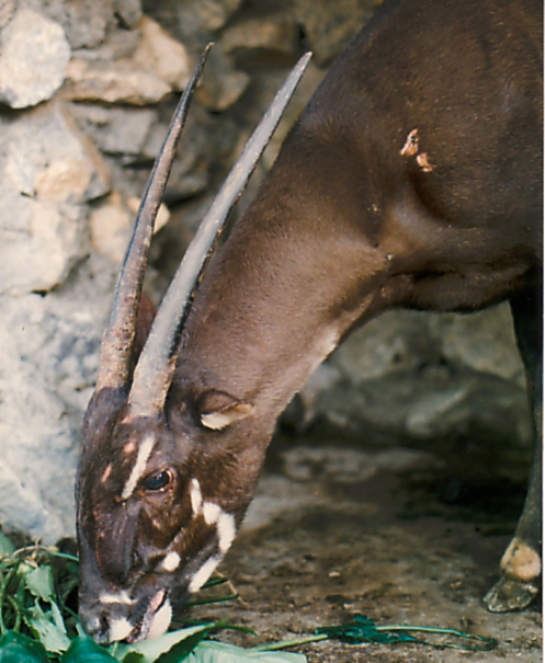
Saola © Bill Robichaud
In a remote village one of the Vietnamese scientists noticed an unusual skull on the wall of a house. It sported a pair of nearly straight horns, each about two feet long. He and his colleagues had never seen such a skull. The animal, which was found on both the Vietnam and Laos side of the Annamites. was called a “saola” in Lao. There, a “saola” is part of a device used for spinning yarn – it’s the word for the two arms that support the wheel or drum of spinning wheels used in the area. Local people call the animal this because its horns are about the same size and shape. Another nickname used by some villagers is the “polite animal”, due to saola’s quiet, gentle nature.
A 30 year quest began.
In looking over a list of the greatest treasure hunts in history, which includes the search for the Ark of the Covenant and King Solomon’s mines, it seems they have some common characteristics.
1. Treasure is exceedingly rare.
2. Treasure is typically hidden in a difficult to access place.
3. Legends build up around the treasure.
4. There are rumors of treasure sightings
5. There are a series of clues left behind.
For more than 30 years, scientists have been searching the Annamites to various degrees in quest to find the saola. So how does the saola measure up as treasure?
1. It is rare—there are probably no more than 100 saola left on earth.
2. Difficult Access—the saola’s range is very dense, mountainous rainforest
3. Legendary—no biologist has yet seen one in the wild despite being the size of a white-tailed deer
4. Sightings-only several times have saola shown up on hundreds of thousands of images taken by camera traps set in the Annamites.
5. Clues—the saola does leave behind clues in the form of chewed plants, poop, and DNA.
Treasure hunts seem to go in stops and starts. The treasure captures someone’s imagination and they dedicate both time and resources to finding it. Since 1992, no one has ever spent the appropriate amount of time and resources necessary to find one of Mother Nature’s most elusive treasures.
For the last 2 years, the Saola Foundation has been ramping up to a level necessary to find the lost treasure of the Annamites. The quest is about to begin.
For the next few weeks, I plan to tell you the story of the search and invite you to join this epic quest. I have had the good fortune of being part of this effort. I use the term “fortune” for a reason. Searches taking place in a remote part of the world that need skilled people and new search techniques don’t happen for free. I share this story in part to educate more people about the saola and in part to help fund the search. My wife and I have pledged $1,000 towards this effort and ask you to consider joining it as well. Our goal is to match our contribution several times over. The cost of the search is approximately $1,000 per day. My hope is that the former readers of This Week in the Wild can fund an additional 9 days.
Each Wednesday for a month, you will be taken on a treasure hunt to learn a new part of the story. If you would like to make a donation, please visit https://www.saolafoundation.org/
It will be Titanic.

